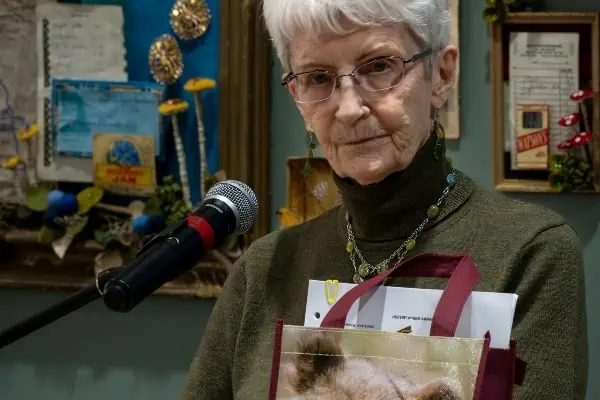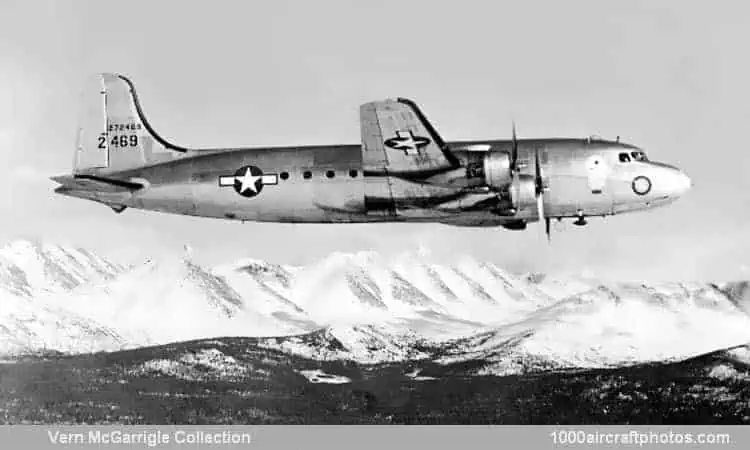
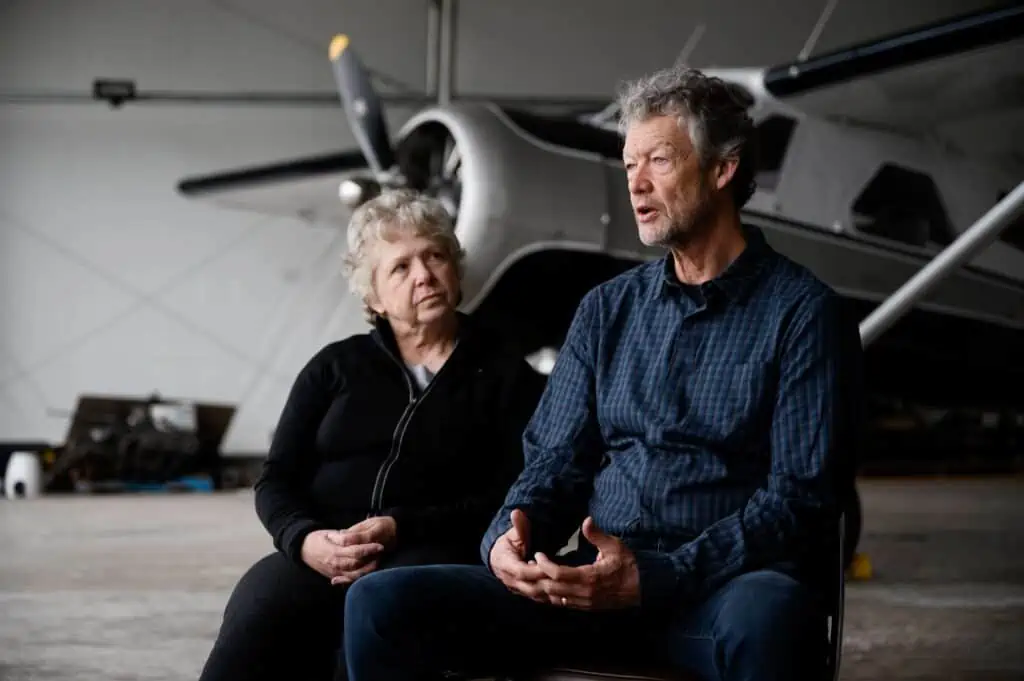
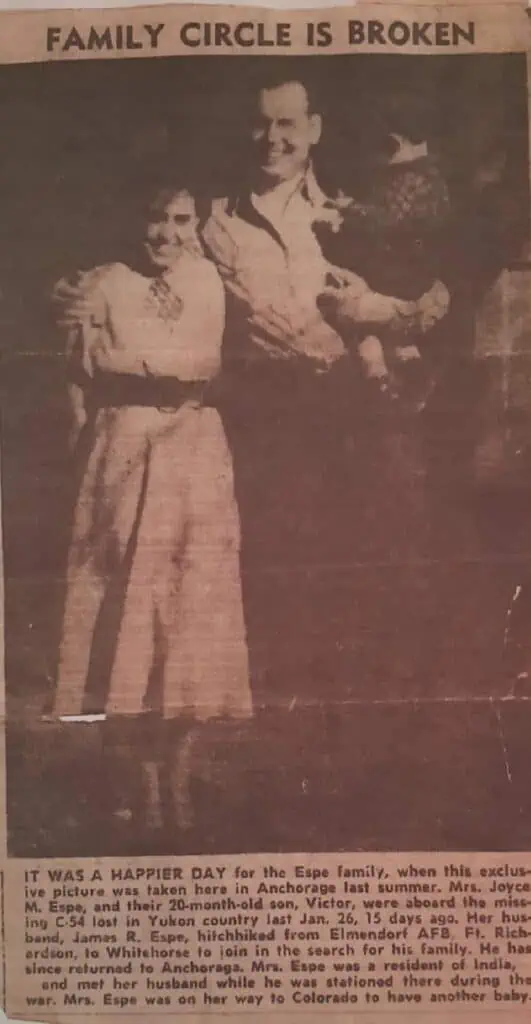
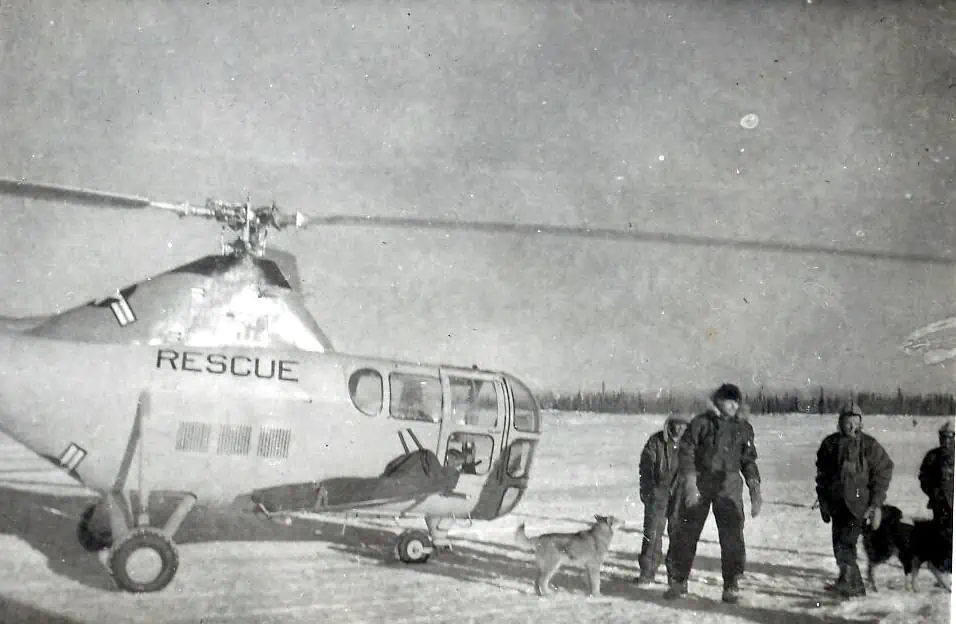
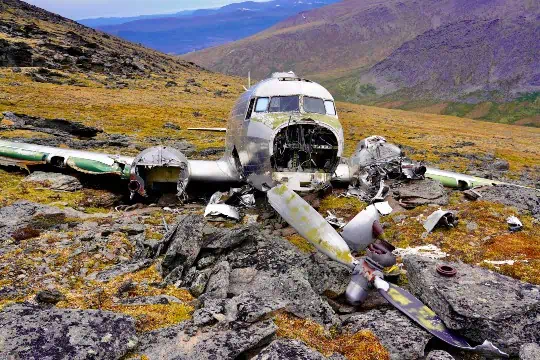
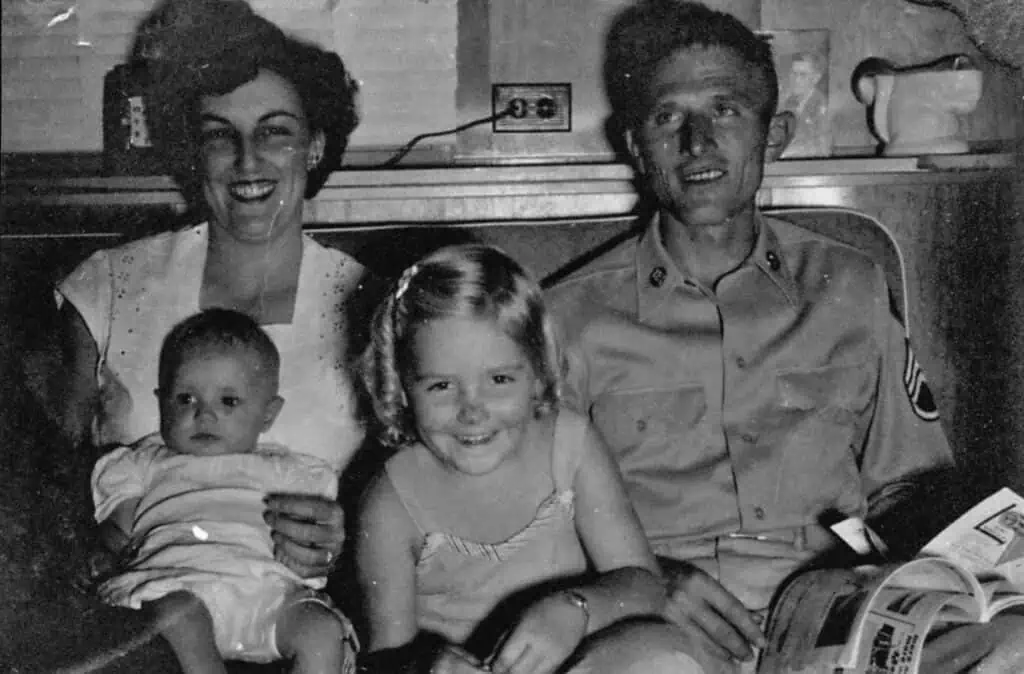
It could be a military dog tag, a cut of metal or a twist of fabric. Uncovering even the smallest thing from a plane that disappeared, more than 70 years ago, has the power to change lives. It can give certainty and closure to families still missing loved ones.
“I feel their anxiety,” said Donna Clayson. “It would be wonderful if we could go to the families and say, ‘We found them.’ I can’t even imagine that feeling. It would be such a relief.”
Though Clayson has not yet met them in person, she feels a connection to those families, and that’s what motivates her to help search for the U.S. Air Force Douglas C-54 Skymaster passenger plane that vanished in the air over southwest Yukon on January 26, 1950.
Here’s what we know: The plane left Anchorage, Alaska, and followed the Northwest Staging Route (a series of airfields and radio operator stations constructed during the Second World War) bound for Montana.
The plane checked in at Snag, Yukon, and reported ice on the wings and turbulence, both relatively common problems at the time. About half an hour later, the plane should have been at Aishihik, but it never arrived. And then there was nothing.
There was an extensive search, but the Yukon’s mountainous terrain and vast unpopulated areas make finding lost things difficult at the best of times. The brutal January cold didn’t help. In fact, four search planes crashed while looking for the Skymaster, but, miraculously, no one was killed in those accidents.
After three weeks, the search ended. The plane and its 44 passengers—all military men, except for one pregnant woman and her small child—had seemingly vanished.
Decades later, the missing plane had been mostly forgotten until a crumpled piece of metal helped bring the story back into the light.
In 2018, Toronto-based filmmaker Andy Gregg was in the Yukon presenting Secrets From the Ice, a documentary on ice patch archaeology, when a piece of metal on a storage shelf in the Yukon government’s archaeology unit caught his eye.
The specimen, which Gregg describes as “a twisted mess of rivets and aluminum,” had been spotted and recovered during archaeological fieldwork. At first, it was thought it came from the Skymaster, but it didn’t. Turns out, it was the mechanism from a fuel tank commonly dropped from smaller planes used on the Lend-Lease Program during the Second World War.
“During that period in Yukon history, aviation just went crazy,” said Gregg. “Because the Yukon airspace was in-between the southern U.S. and Alaska, it became the graveyard for so many different wrecks.”
Nevertheless, the story piqued Gregg’s interest. He started investigating and communicating with families of the missing. In 2022, he released a documentary called Skymaster Down. It chronicles how the plane went missing and follows some modern-day searches for its remains, but the heart of the film is the personal stories from the families.
“Most of these people had never told their stories before,” said Gregg. “I went down to Alabama and talked to Judy Jackson about the father she never met because her mother was pregnant with her when he went missing. Still, all these years later, she breaks down in tears that she never knew her father.
“All of a sudden, a sort of amorphous idea—that there’s a missing plane out there—changes when you realize it’s 44 individuals that went missing.”
There are three basic theories on what happened to the plane: One is that it went into a lake, but, personally, Gregg thinks that’s a long shot.
“It would have taken an immense amount of power for the plane to puncture the thick January ice, and it would have made a huge noise,” he said. “In the spring, fuel and anything that floats would’ve come to the surface, and nobody ever reported anything like that.”
The second theory is that it fell into a crevasse somewhere along the flight path. Gregg doesn’t think that’s the case either: “My own personal opinion is that it’s not there. That area has been criss-crossed by outfitters, miners, geologists, truckers, hunters, trappers, First Nations. And a good number of the bush pilots out of Whitehorse know about it, so they’ve been keeping their eyes open for years and there are no reports of a big airplane lying out there anywhere.”
The third theory is that it ended up somewhere in the Saint Elias Mountains. Gregg thinks this theory is the most probable: “I found the radio operator who was in Snag, that day, and he said pilots had a tendency to take shortcuts. If they thought Hey, let’s try going to the south, they’d go straight into the front range of the Saint Elias Mountains.
“So, I think it hit one of those mountains, and my worry is that it’s buried in a glacier.”
There are more than 500 documented plane crashes in the Yukon. Based on flight plans and communications from aircraft, it’s believed there are at least four more that have not been documented. The Yukon has vast areas of wilderness and lots of places for wreckage to hide.
Few know that better than Clayson, a long-time search-and-rescue volunteer and seasoned plane spotter. In fact, she received a Commissioner of Yukon Public Service Award for her volunteer work, in 2022.
Clayson first became involved in the search for the Skymaster through the Civil Air Search and Rescue Association, commonly known by its acronym CASARA. Over the years, she’s helped the group with administration and spent countless focussed hours peering out of plane windows, surveying the landscape for signs of a wreck.
“When I heard about the Skymaster, I felt something in the pit of my stomach,” said Clayson. “It felt as if it was talking to me, saying, ‘Here I am, come find me. I’m here. You just need to look.’”
So that’s what Clayson is doing, but it’s not easy work. Searching for a plane that disappeared over rough mountainous terrain takes research and technical expertise. It also requires paperwork and gas money to keep the search planes in the air.
In 2022, Clayson and other interested volunteers formed a new society called Skymaster 2469 CAN/AM. It’s named for the plane and the fact that the search involves both Canada and America.
Currently, Skymaster 2469 CAN/AM is reaching out to pilots and putting together computer simulations of possible shortcuts the Skymaster crew may have considered. They will use this information to plan ground and aerial searches over the summer of 2023. In the meantime, they want to make sure people know that the plane is out there.
“Nothing is insignificant,” said Clayson. “Just keep an eye open, but don’t remove anything, and take note of what you saw. If you see something … anything … contact the Yukon government reporting line.”
Seeing his documentary help, to fuel a renewed interest in searching for the plane and those missing 44 individuals, is a gift for Gregg.
“I’m thrilled now that it’s back in the conversation,” said Gregg. “So, the film spurred this interest in searching, and that’s all I can ask for. It’s better than any prize; it’s better than anything.”
Both Gregg and Clayson believe the Skymaster will be found one day.
“We need to find this aircraft,” said Clayson. “We need to do everything we can to bring closure to those families. We just have to keep looking.”
See Skymaster Down on CBC Gem streaming service at gem.cbc.ca. And find out more about the Skymaster 2469 CAN/AM Society on their Facebook page or by contacting president Brent McHale at [email protected].


